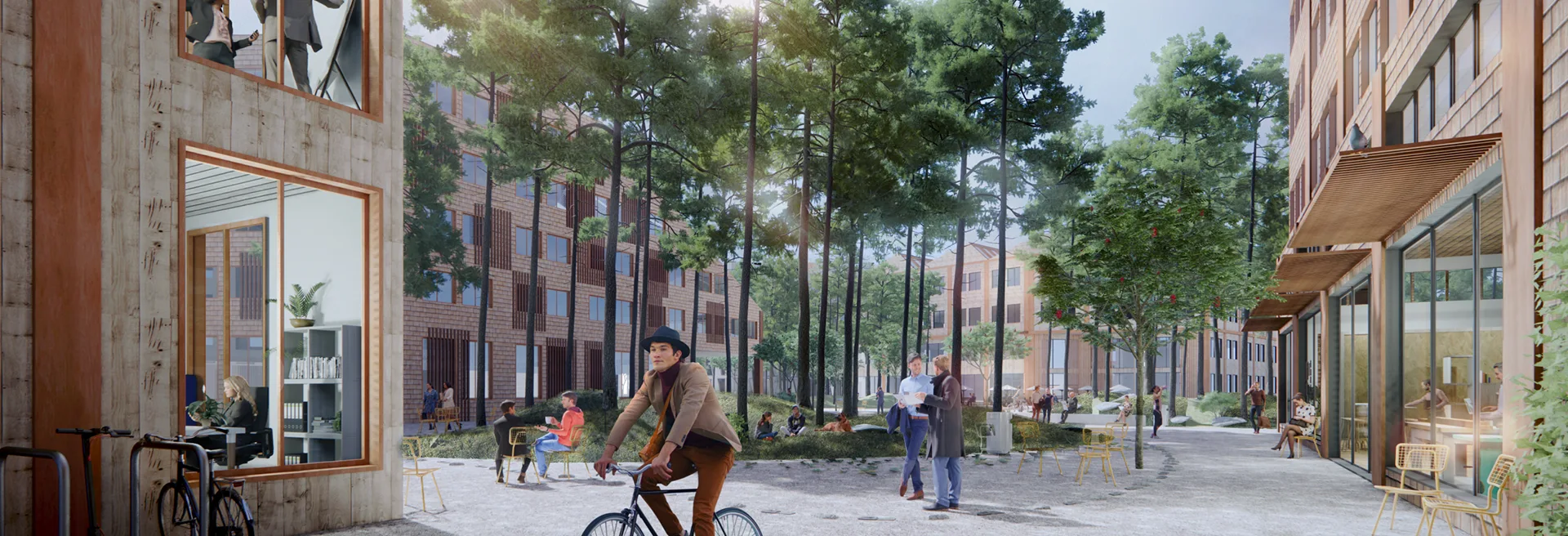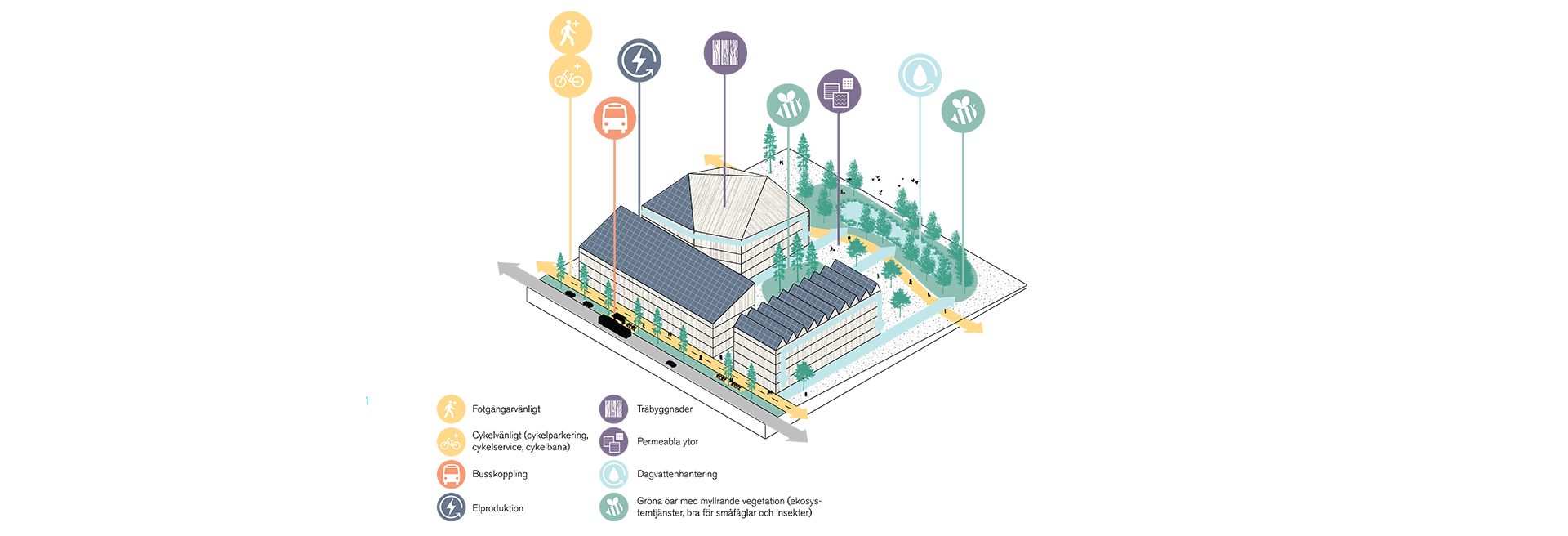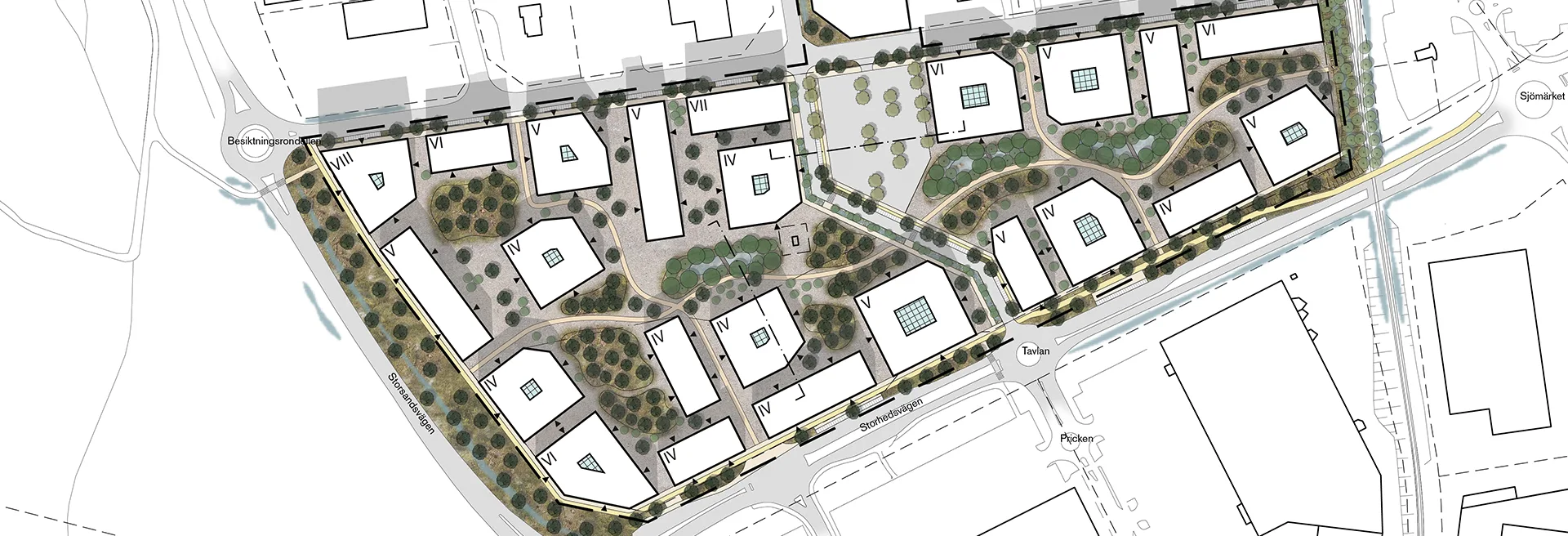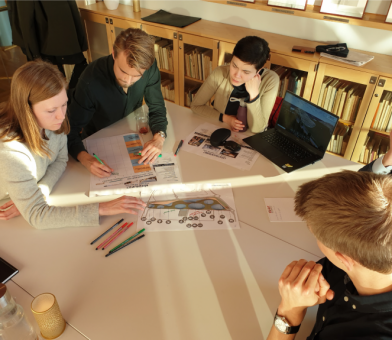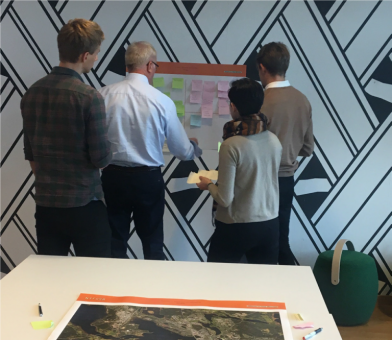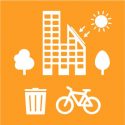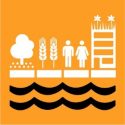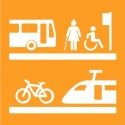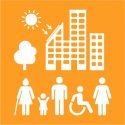Storheden is located in the middle of a business area surrounded by beautiful nature and a coastline. The area is close to several important nodes in Luleå with potential to become a compliment to the city center. Storheden City. Nyfosa’s proposal for Storheden City involves a gradual change of the area in stages. The submitted plan application sends Storheden in a new direction and strengthes Luleå as a whole.
Content
Background
Storheden is a popular commercial area on the outskirts of Luleå that attracts a lot of consumers. The area has been developed as an industrial area since the 1960s and since the 1970s it has also served as an area for commerce with popular stores such as Coop, Clas Ohlson and Systembolaget.
The rapid development in digitalisation has a major impact on commerce. With rapid digital development, changing consumption patterns and greater consumer awareness, the conditions for how commerce is conducted are changing. This places higher demands on property owners, but also on partners in the form of commerce companies and municipalities. Everyone needs to keep up with the development to be competitive, make the right decisions and develop their concepts, real estate and cities to meet the future needs and demands when it comes to commerce.
As a property owner, Nyfosa continues to see great potential in physical commercial areas, but we believe that they need to look differently than they do today and that they need to develop through better collaboration processes than they have in the past. We want to develop our properties in collaboration with our partners as such, in order to meet the demands of the consumers of tomorrow. We want to strive for this type of development to happen in line with concepts drawn in the Agenda 2030 and the Sustainable Development Goals.
To investigate how to move forward in developing this property, we contacted Luleå University of Technology (LTU), the municipality and consumers that make use of Storheden. We conducted two workshops with the help of researchers from LTU and the municipality.
Workshop 1 consisted of three exercises – site analysis, formulating goals and sketching future visions. The participants had the opportunity to brainstorm about the current strengths, weaknesses, opportunities and threats for Storheden, a so-called SWOT analysis. The SWOT matrix was placed on maps of Storheden. Step 2 was to cluster the results from Exercise 1 and formulate goals based on them. At the end, all groups outlined four future visions for the Future of Commerce 2030 based on four different future economic scenarios.
In workshop 2, we presented the results of Workshop 1; three visionary scenarios that were developed based on the results – The City of Commerce, The Logistics Center and The Experience Hub. The spectrum for each scenario is illustrated together with the reference style and six aspects of each proposal – traffic, external forces, commerce, energy, land use and buildings. Then we discussed how the scenarios lived up to the goals that had been set. The purpose of this workshop was to assess each scenario based on the objectives set out in workshop 1 and to develop the basis for further processing of the scenarios.
Proposal
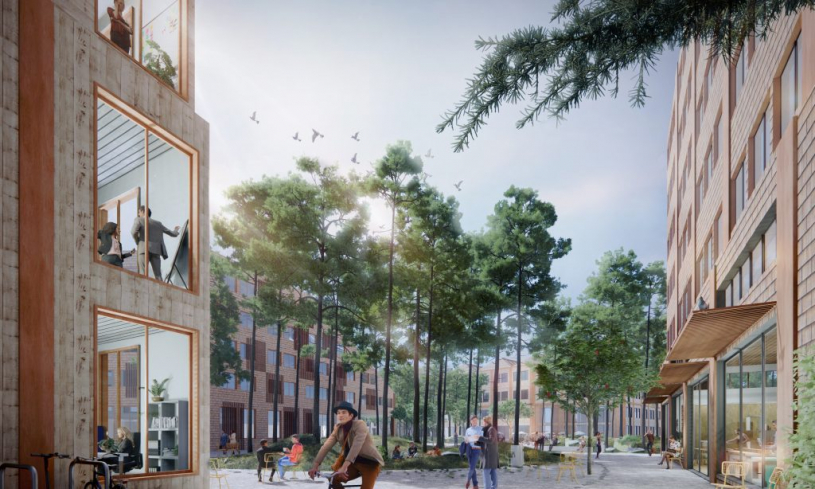
The vision is for Storheden City to become an attractive area with a mix of commerce, offices and workshops. The structure proposed is intended to be adaptable and flexible to change the content of the area over time. The goal is to strengthen the green infrastructure, attract more visitors and workers, and improve the conditions for sustainable mobility.
The proposal contributes with a clear and strict framing facade facing the surrounding streets. On the inside, a more dynamic and vibrant environment is created, which at the same time strengthens the green infrastructure. For visitors, business operators and employees, an environment is created with large assets in the form of qualitative nature, mixed architecture, good connections for pedestrians and cyclists and the opportunity for recreational activities.
The fully developed plan proposal consists mostly of offices that are mixed with workshops in the northern part and commerce in the central and southern part. The large areas for ground-level parking are replaced by a larger mobility center in the north. The heights of the buildings vary with slightly higher development in the north to avoid casting large shadows in the central public spaces. The corners of the property also have higher buildings to accentuate the entrances. Meandering through the area is a generous stretch of native vegetation, reintroducing natural habitat from the west to the eastern part of Storheden. These vegetated spaces also help take care of stormwater. Car traffic is regulated via the surrounding streets with the exception of the central north-south street, which links Storhedsvägen with the mobility center. In conclusion, a structure is created that is a hybrid of the characters found in Luleå, such as the wooden buildings on the campus surrounded by trees, the clear structure with public ground floors of city center and the pine tree woods of the Kallax area.
The number of floors varies between 2 and 8 floors with an exempting building of 10-12 floors. Towards the more intimate street space of Jespersgatan and Köpmansgatan, a lower construction is proposed that interacts with the surrounding buildings and the streetscapes. In order to make the area even more interesting and vibrant, a variety of functions are planned. In the southern part of the area, partly in existing buildings, city centre functions are planned with other functions in the upper storeys such as schools, offices and adult education. In connection with existing residential buildings to the north, housing is proposed on that side of the area. Around the park and the square in the middle of the area, there will be a mix of housing, commerce, education, offices and preschools. With a mix of functions, the park and the square will be used for large parts of the day, thus promoting both activity and security in the area.
Sustainability
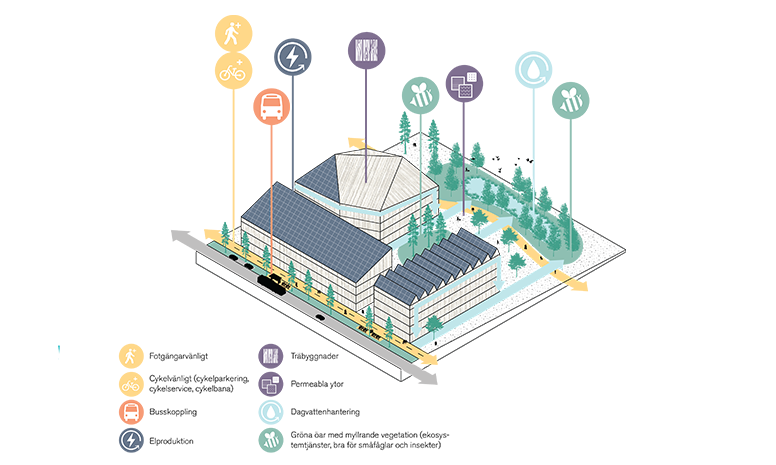
Within the Storheden City project, there are high ambitions to develop the future of commerce. The project should guide both knowledge and practice in the development of commercial real estate, both on a local and national scale. In this way, the project cam also contribute to the goal of Luleå municipality to be a leading hub for growth and innovation.
The type of development planned in Storheden is well suited for the expansion of solar cells. The large addition of roof surfaces that arises in the project can be used for the construction of new solar panels.
The goals as described in Vision Luleå 2050, is for Luleå to be free of having a negative impact on the Environment by 2050. To achieve this, it is proposed to minimize the total energy demand through, for example, energy efficient construction and consumer awareness to reduce their use of energy.
To help strengthen Luleå’s natural values, a generous green natural stretch is proposed throughout the property. Stormwater management will be done in an innovative and sustainable way via a small-scale open stormwater system.
By improving the possibilities for pedestrians, cyclists and public transport access, the opportunities for sustainable transport increase. This also creates many alternative ways for consumers and workers to commute.
The proposal also aims to promote the goal of a healthy life and a good living environment by creating health-promoting workplaces. The design of vegetated and natural qualities contributes to reduce stress and form stimulating workplaces for increased well-being, collaboration and productivity.
By densifying in a smart way, on already utilized ground, the city of Luleå can be developed without damaging the existing natural environment. In this case, large parking areas are converted into areas for trade and offices.
Map
Want to know more about the project?
Feel free to contact one of the project's contact persons
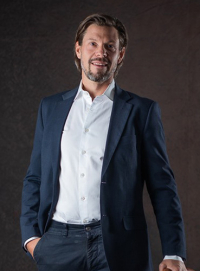
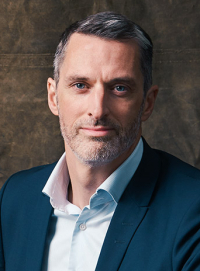
Latest projects
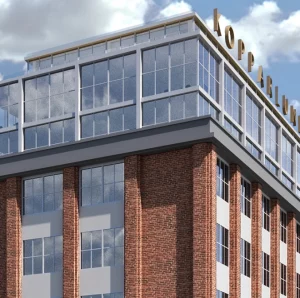
In progress
Västerås | Kopparlunden South
Enriched industrial environment that is revived in central Västerås
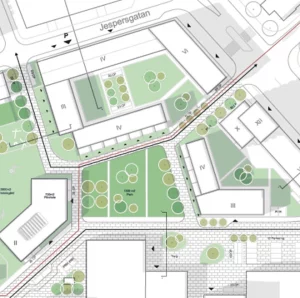
In progress
Malmö | Bryggeriet (The Brewery)
A mix between unpolished industrial environment and a green sustainable neighborhood
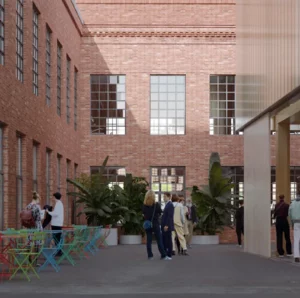
Forthcoming
Malmö | Sämjan
A neighborhood with both a rich history and cultural life
